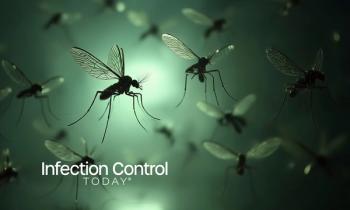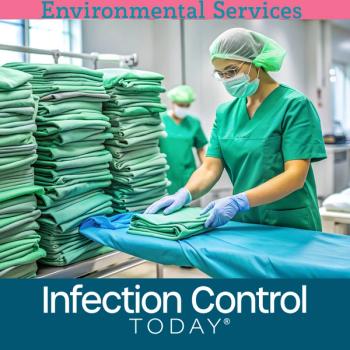
Rhinovirus Infections Decreased—But Did Not Vanish—During Pandemic
However, respiratory HAVIs continued to be reported, despite elevated prevention practices, leaving young, susceptible patients threatened.
Even though health care-associated rhinovirus infections incidences were reduced, they were still reported during the COVID-19 pandemic, despite amplified infection control and prevention practices according to a recent
The investigators observed an overall decrease in the pandemic period (P < 0.01) in respiratory HAVI of 68%, with pre-pandemic rates of 0.19 infections per 1000 patient significantly decreased to a rate of 0.06 per 1000 patient days. Rhinovirus made up proportionally more of the respiratory HAVI in the pandemic period (64% vs 53%), with respiratory HAVI secondary only to rhinovirus identified during 8 of 16 months in the pandemic period. During the pandemic period, compliance with HAVI prevention bundle significantly improved.
Eimear Kitt, MD, program director, Infectious Diseases Fellowship Program; associate medical director, Infection Prevention and Control, Division of Infectious Diseases, Children’s Hospital of Philadelphia, and lead author for the study, answered key questions for Infection Control Today® (ICT®) in an exclusive interview.
Infection Control Today®(ICT®): Please give a brief summary of the key findings and why they are important.
Eimear Kitt, MD: Health care-associated viral infections (HAVI) are a preventable cause of harm, particularly in the pediatric population. The pandemic provided opportunity to measure the effectiveness of HAVI prevention measures when followed consistently by staff. Throughout the pandemic period, we noted a sustained and significant decrease in respiratory HAVI of 68%; however, rhinovirus infection persisted. This is important as it suggests that even when current prevention practices are optimized, transmission dynamics of rhinovirus in the nosocomial settings are not completely addressed.
ICT®: What is the practical application for the key findings for infection preventionists from this study?
EK: The main practical application is that despite robust public health and in hospital infection prevention and control (IPC) measures, we did not prevent rhinovirus HAVI, as transmission persisted throughout pandemic months. Heightened awareness should exist around the risk for rhinovirus HAVI and the potential for clusters, particularly in the immunocompromised and vulnerable populations.
ICT®: What results surprised you, if any?
EK: The persistence of rhinovirus seemed initially surprising given our strict prevention practices, yet this has been described in both community and other hospital settings throughout the pandemic where similar mitigation measures were in place.
ICT®: What, if any, future research will there be related to this study?
EK: Further research should focus on the unique transmission dynamics of rhinovirus that may require different prevention measures to be implemented.
ICT®: Is there anything else that you would like to add?
EK: With any preventative measure, the benefits should be weighed against the potential risks. Throughout the study period, we had restrictive visitation policies and strict screening of all staff and visitors, thus we suspect a substantial proportion of our transmission was from asymptomatic employees and/or adult caregivers at the bedside. Both of these groups make up crucial parts of the patient's care team. We, therefore, believe efforts should focus on increasing awareness of asymptomatic transmission particularly to high risk groups like neonates and immunocompromised patients, and reinforcing the importance of consistent hand hygiene, rather than restricting all visitors in pediatric settings.
Newsletter
Stay prepared and protected with Infection Control Today's newsletter, delivering essential updates, best practices, and expert insights for infection preventionists.





